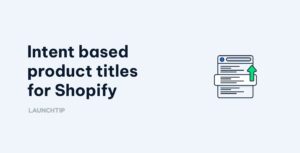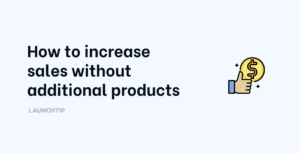Last Updated on by Dan S
Originally Published January 2, 2024.
Understanding the ins and outs of organic backlinks is crucial for your website’s SEO success. You’ve probably heard that quality backlinks can skyrocket your search engine rankings, but do you know which metrics actually matter?
Navigating the sea of SEO can be overwhelming, but don’t worry. You’re about to get a clear blueprint of the key metrics that’ll help you measure the effectiveness of your backlinks. These indicators will not only guide your strategy but also ensure your backlink efforts pay off.
Keep reading to unlock the secrets of backlink analysis. You’ll learn how to identify the metrics that provide real insights into your SEO performance, helping you to craft a backlink profile that search engines love.
Table of Contents
ToggleThe Importance of Organic Backlinks for SEO Success
In the bustling digital market, standing out is paramount, especially if you’re running an e-commerce platform like Shopify. One of the most effective ways to ascend the search engine rankings is by accruing organic backlinks. These are nods of approval, naturally earned without paying for them, from one site to yours. They signal to search engines that other websites deem your content valuable enough to link to, thus boosting your site’s authority.
When thinking about organic backlinks, consider the diverse approaches to gain them. Engaging with influencers or getting shoutouts on social platforms can facilitate the process. Authentic endorsements from these digital authorities resonate well with both audiences and search algorithms.
Creating compelling blog posts that offer unique insights or data can often encourage other sites to link back to your content as a resource. The skyscraper technique—where you create better content than what’s currently ranking at the top—is a proven method to attract backlinks. This technique ensures that your content is the most informative and comprehensive out there, making others more likely to link to it.
Another method is to be a podcast guest. This approach opens doors to a new audience and, with it, potential backlink opportunities from the podcast’s following or even from the host’s site itself.
See who’s linking to your competitors to understand the backlink landscape in your niche. By analyzing your competitors’ backlink profiles, you can target similar sites for your outreach efforts, potentially converting them to your own backlink sources.
Lastly, using Help a Reporter Out (HARO) or hiring a HARO agency can be incredibly effective. HARO connects journalists and bloggers with sources, providing you with opportunities to get mentioned and linked to in various publications.
In leveraging these strategies correctly, you’re not only enhancing your SEO but you’re also building a network of quality content that stands the test of time and algorithm changes. Remember, it’s about cultivating a rich tapestry of backlinks that grow organically over time, adding depth and credibility to your online presence.

Understanding Backlink Metrics
Diving into the world of SEO for your Shopify store, backlink metrics are the compass that guide your strategy. Knowing what to track helps you understand the impact of those organic backlinks you’ve been working so hard to obtain. It’s about quality just as much as it is about quantity.
Domain Authority (DA) and Page Authority (PA) are pivotal metrics. They give insight into the potential power a backlink from a specific domain or page may have. Higher scores generally signal a stronger influence on your site’s search engine ranking.
Tracking the number of referring domains is vital. More unique domains linking to your site suggests a vote of confidence to search engines, increasing your credibility. However, don’t just chase numbers; prioritize domains with higher authority.
Look at the anchor text used in backlinks as it influences relevancy. The right anchor text boosts your chances to rank for specific keywords. Make it natural, diverse, and most importantly, relevant to your page content.
The traffic backlinks bring to your Shopify store isn’t just a vanity metric. Monitor this to understand which backlinks contribute to actual user engagement and potentially, conversions. If influencers shoutout your brand or you’re a featured guest on a popular podcast, watch the traffic spikes that could indicate successful backlinks.
Lastly, backlink position can influence the value passed. Links higher up in a blog post, for instance, may carry more weight than those tucked away at the bottom.
Don’t forget to See Who’s Linking to Your Competitors. Such insights can help you spot opportunities where you might gain similar high-quality backlinks. Competitor analysis tools can streamline this process without sifting through data manually.
It’s also wise to leverage platforms like HARO, where journalists seek expert input. A mention there can net you solid links from reputable news sites. Alternatively, consider hiring a HARO agency to maximize your chances of getting these coveted backlinks.
Keep tabs on these metrics, optimize your backlinking strategy accordingly, and watch your organic search presence soar.
Metric 1: Domain Authority
When diving into the world of SEO, Domain Authority (DA) emerges as a pivotal metric to gauge the strength and credibility of your Shopify store’s website. Developed by Moz, DA predicts how well a website can rank on search engine result pages (SERPs). It’s scored on a scale of 1 to 100 – the higher the score, the greater the ability to rank.
Understanding DA is crucial as you embark on enhancing your site’s SEO through organic backlinks. It’s a comparative tool, rather than an absolute one, meaning your DA should be assessed relative to your competitors. See who’s linking to your competitors and strive to secure backlinks from domains with a higher authority. This will signal to search engines that your site is a trustworthy source of information.
Here are some steps to help boost your site’s DA:
- Focus on obtaining high-quality backlinks from authoritative websites.
- Regularly audit your link profile to weed out spammy or low-quality links.
- Collaborate with Influencers and Be a Podcast Guest to garner shoutouts and mentions that lead back to your site.
Remember, while DA is an important metric, it isn’t the sole factor search engines use to rank pages. It’s best utilized in conjunction with other metrics like Page Authority and the number of referring domains. By continuously analyzing these metrics, you’re equipped to adjust your backlink strategy accordingly, ensuring your approach aligns with how DA influences SERPs.
Moreover, consider using advanced SEO tactics such as the Skyscraper technique to create content that naturally attracts high DA backlinks. This approach involves improving upon existing content that’s already been successful in garnering links. By providing further value, your revised blog posts may become the go-to resource, leading to an increase in organic backlinks and potentially a higher DA score for your Shopify platform.
Metric 2: Page Authority
Page Authority (PA) is a pivotal score developed by Moz that predicts how well a specific page will rank on search engine result pages (SERPs). Unlike its counterpart, Domain Authority, which evaluates the entire domain or subdomain, Page Authority focuses solely on the strength of individual web pages.
When crafting your organic backlink strategy for platforms like Shopify, understanding PA is quintessential. High-PA pages wield the power to boost your site’s visibility and rankings, which is why it’s so critical to get backlinks from these pages. Here are some tactics to improve your site’s PA:
- Secure backlinks from high-authority pages. Use tools to see who’s linking to your competitors and reach out for similar opportunities.
- Regularly churn out high-quality, share-worthy content in blog posts, which attracts natural backlinks.
- Engage with influencers for shoutouts or features. This does not only potentially increase your PA but also brings your products or content in front of a larger audience.
Have you ever considered being a podcast guest? It could be an innovative approach to acquire potent and relevant backlinks. Podcasters often post summaries and notes on their websites, providing you an opportunity to land a high-quality backlink. Plus, you’ll be potentially reaching new audiences in your industry.
Another strategy is the Skyscraper technique. Find a popular, high-ranking piece of content within your niche, create something significantly better, and then reach out to the same backlinking domains to replace the existing content with your superior one.
Lastly, use platforms like HARO or hire a HARO agency which can help you to get quoted as an expert, leading to authoritative backlinks from news websites and publications.
Remember, boosting your Page Authority is an ongoing process that requires consistent effort. Keep tracking your PA score and adapting your strategies to outdo your competitors.
Metric 3: Trust Flow
When you’re diving into the world of organic backlinks, understanding Trust Flow is essential. This metric, developed by Majestic SEO, measures the trustworthiness of your site based on the quality of backlinks pointing to it. Essentially, it’s a gauge of the credibility of your site in the eyes of search engines.
Trust Flow is profound because it relies on the notion that trustworthy sites tend to link to other trustworthy sites. For your Shopify platform, a high Trust Flow score means you’re associated with high-caliber domains, which could significantly influence your SEO rankings.
To leverage Trust Flow effectively, focus on gaining backlinks from websites with high Trust Flow themselves. Here’s what you can do:
- Engage with influencers within your niche. When these reputable voices give you shoutouts or include your Shopify store in their blog posts, you’re likely to inherit some of their trustworthiness.
- Collaborate and be a podcast guest. This can be a strategic move to have your site mentioned on platforms with high Trust Flow scores.
- Apply the Skyscraper technique. Outdo your competitors by creating better, more authoritative content and then reaching out to the same sites that link to them.
- See who’s linking to your competitors and aim to secure backlinks from these sources to absorb some of their trust.
Remember, manipulating Trust Flow through spammy or inorganic methods could backfire. Genuine efforts and time are required to see a substantial change in your Trust Flow score.
To streamline this process, consider using platforms like HARO or hiring a HARO agency that can connect you with journalists looking for expert input. This approach can result in high-quality, organic backlinks from domains with strong Trust Flow, giving your e-commerce venture that much-needed SEO push.

Metric 4: Citation Flow
When measuring your Shopify site’s backlink profile, you’ll want to pay attention to Citation Flow, a metric indicative of the link equity or “power” a website carries. Citation Flow, developed by Majestic SEO, quantifies the influence of a URL based on the number of sites linked to it.
High Citation Flow reflects a high volume of backlinks, suggesting that your website’s influence is growing in the online sphere.
However, it’s not just about collecting any backlinks. The key is to amass high-quality, organic backlinks that contribute positively to both your Citation Flow and Trust Flow. Here’s how you can enhance your Citation Flow:
Secure Quality Backlinks
Strive for backlinks from reputable sites that are not only abundant but also hold value. Quality over quantity is a mantra for success in SEO. Engage with influencers for shoutouts or be a podcast guest; these unique opportunities can lead to valuable backlinks that boost your Citation Flow.
Competitor Link Analysis
See who’s linking to your competitors and why. Utilize tools to analyze their backlink profiles and target those websites for your own backlink strategy. This maneuver helps you tap into established networks and gain backlinks that increase your site’s Citation Flow.
Content-Driven Techniques
Apply the “Skyscraper” technique to create superior content that naturally attracts backlinks due to its value and uniqueness. High-quality blog posts that outshine the competition can garner a swarm of backlinks, consequently raising your Citation Flow.
Utilize HARO
Use HARO or hire a HARO agency to connect with journalists and media outlets that can provide authoritative backlinks. Such organic backlinks are seen as endorsements by search engines, bolstering both your site’s Citation Flow and credibility.
Remember, Citation Flow reflects the number of backlinks but doesn’t factor in the quality of those backlinks, which is why maintaining a balance between Citation Flow and Trust Flow is crucial.
High Citation Flow with low Trust Flow may imply that your backlinks are numerous but not necessarily from trusted or relevant sources. Strive for a harmonious balance between the two to ensure SEO success for your Shopify platform.
Metric 5: Anchor Text Optimization
When you’re developing your organic backlink blueprint, you can’t ignore anchor text optimization. Anchor text, the clickable words used in a hyperlink, significantly influences how search engines interpret the relevance and quality of a link to your Shopify store or content.
To leverage anchor text effectively, it’s vital to monitor how these clickable texts are distributed across your backlink profile.
Avoid over-optimization; search engines may penalize your site if they detect unnatural patterns, like using the same keyword-rich anchor text repeatedly. Instead, aim for a natural mix that includes:
- Branded terms
- Generic terms
- Naked URLs
- Long-tail keywords
- Partial match keywords
Aligning your anchor texts with user-intent ensures that visitors who arrive from organic backlinks are more likely to engage with your content.
If your page perfectly matches what they’re looking for, they’ll stick around longer—and this is something search engines take note of when ranking your page.
See who’s linking to your competitors with optimized anchor text by conducting a competitor backlink analysis. You might discover gaps in your strategy or come across new backlink opportunities.
Moreover, when engaging with influencers or arranging shoutouts, provide suggestions for anchor texts that relate naturally to their audiences. And when participating in HARO or other outreach platforms, specify your preferred anchor texts when responding to queries.
Remember, the context in which your backlink appears is just as crucial as the anchor text itself. When crafting blog posts or being a podcast guest, ensure your linked anchor text flows seamlessly within the content. It should feel like a natural extension, not an awkward insertion.
Finally, the Skyscraper technique can be a powerful way to develop content that commands high-quality backlinks; just be sure that the accompanying anchor texts enhance the user experience and offer contextual relevance.
Conclusion: Crafting a Backlink Profile for SEO Success
Mastering the art of backlinks is a game-changer for your SEO strategy. Remember, it’s not just about quantity; the quality and context of your backlinks can propel your Shopify store to the top of search engine rankings. By focusing on key metrics like DA, PA, and the diversity of referring domains, you’re setting a strong foundation.
Anchor text optimization is your secret weapon, ensuring search engines see the relevance and quality of links pointing to your content. Stay vigilant in monitoring your backlink profile and be strategic in acquiring new links.
You’ve got the blueprint; now it’s time to build an organic backlink profile that drives your SEO success sky-high.










